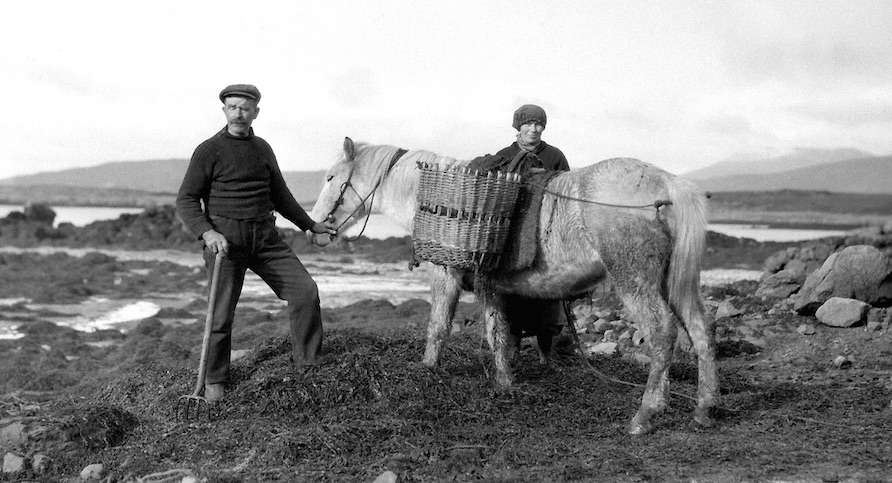Index
- Machair (2022)
- Orasaigh (2023)
- Full Portfolio (opens in new window)
Machair (2022)

Machair is an interactive geolocative soundwalk that explores the agricultural traditions and ecology of the machair in the Western Isles of Scotland through spoken word, song, music, and field recordings. Developed in collaboration with local community groups, the soundwalk is mapped to a walking trail on the island of Benbecula, responding directly to the landscape and traditions of the machair. Intergenerational spoken narratives structure the soundwalk with contemporary and archive field recordings that span over 70 years of oral tradition. Commissioned by Taigh Chearsabhagh Museum and Arts Centre with funds from Visit Scotland, the work can be accessed on location via the free geolocative audio app Echoes.
‘Machair,’ a Gàidhlig (Scottish Gaelic) word for ‘fertile and low-lying grassy plain,’ is one of Europe’s rarest and most species-rich habitats; only occurring on the exposed west-facing shores of Scotland and Ireland (Machair Life, 2014). Generations of low-intensity farming have shaped this unique landscape and encouraged wildlife over millennia (Love, 2009). Today, these practices are sustained through crofting (a form of low-intensity subsistence farming particular to Scotland), carried forward through ‘oral transmission from generation to generation, preserving indigenous knowledge without recourse to written code’ (Sheridan, 2011). Land reforms have played a key part in sustaining these traditions, wresting control of the machair from feudal landlords and bringing the land into public ownership (Berton, 2019). As such, the machair is a cultural and political landscape, that represents a resistance to privatisation, and is an important part of Gàidhlig culture (Welstead, 2014).
Since its launch, Machair has been adapted for radio broadcast (Resonance FM & Radiophrenia), concert performance (GLEAM Festival), and nominated for an Ivor Novello Award for Best Sound Art. Press coverage of the work included BBC Alba, and Press & Journal. In 2024, the soundwalk will feature in the international festival, Nordic Music Days, and broadcast on BBC Radio 3. A stereo mix of Machair can be found below.
- Love, J.A. (2009). Oh, dear! What can the Machair be? The Glasgow Naturalist, 25, 3-10.
- Machair Life (2014). Crofting on the Machair (report)
- Sheridan, M. et el. (2011). Gaelic Singing and oral tradition. International Journal of Music Education, 29(2), 172–190.
- Welstead, W. (2014). The role of culture in the sustainable use of a ‘cultural landscape’: a case study from the Hebridean machair. Green Letters, 19:1, 75-88.
Orasaigh (2023)

Orasiagh is a geolocative sound walk setting of Steve Ely’s poem on the South Uist tidal island of Orasaigh. Ely’s visionary poem, whilst always remaining anchored in the island, roams widely, exploring a range of themes related to Uist and the wider world – sea level rise, the crisis of the ‘sixth extinction’, history, culture, politics, conflict and class.
Mapped to a coastal walk around Orasaigh and the South Uist coast, this interactive binaural sound work is structured around Ely’s narration of the poem with original compositions and soundscapes captured on location in surround sound. This work was developed as part of an AHRC Academic Residency at Taigh Chearsabhagh Museum & Arts Centre, with funds from AHRC and the Arts Council of England. A version of the work is scheduled to be broadcast on BBC Radio 3 series Between the Ears in 2024 (45 minutes), and will be commercially released on Huddersfield Contemporary Records/NMC, Spring 2025. The work can be accessed on location via the free geolocative audio app Echoes. A stereo mix of Orasaigh can be found below.
This output, along with Machair (2022), will provide a ‘proof concept’ for a large-scale interdisciplinary project investigating the use of geolocative soundwalks as a means to provide culture-led placemaking that opens up new avenues to investigate place, identity and community through sound and digital storytelling. By engaging communities in the act of listening, the project aims to highlight the role of place in generating local identities, connecting people to their natural environment, and uniting communities in shared appreciation of their localities, culture and heritage. Looking ahead, the project will be scaled up across the Western Isles in 2025 through an AHRC Research Project Grant, leading to the creation of soundwalks across the Western Isles in partnership with regional and national arts and heritage organisations such as Historic Environment Scotland. Long-term outputs and impact activities include a symposium hosted at Taigh Chearsabhagh, journal articles, concerts and public engagement events. KE activity includes a partnership with international headphone manufacturer SHOKZ, exploring the potential application of bone-conduction headphones in the public arts and heritage sectors.